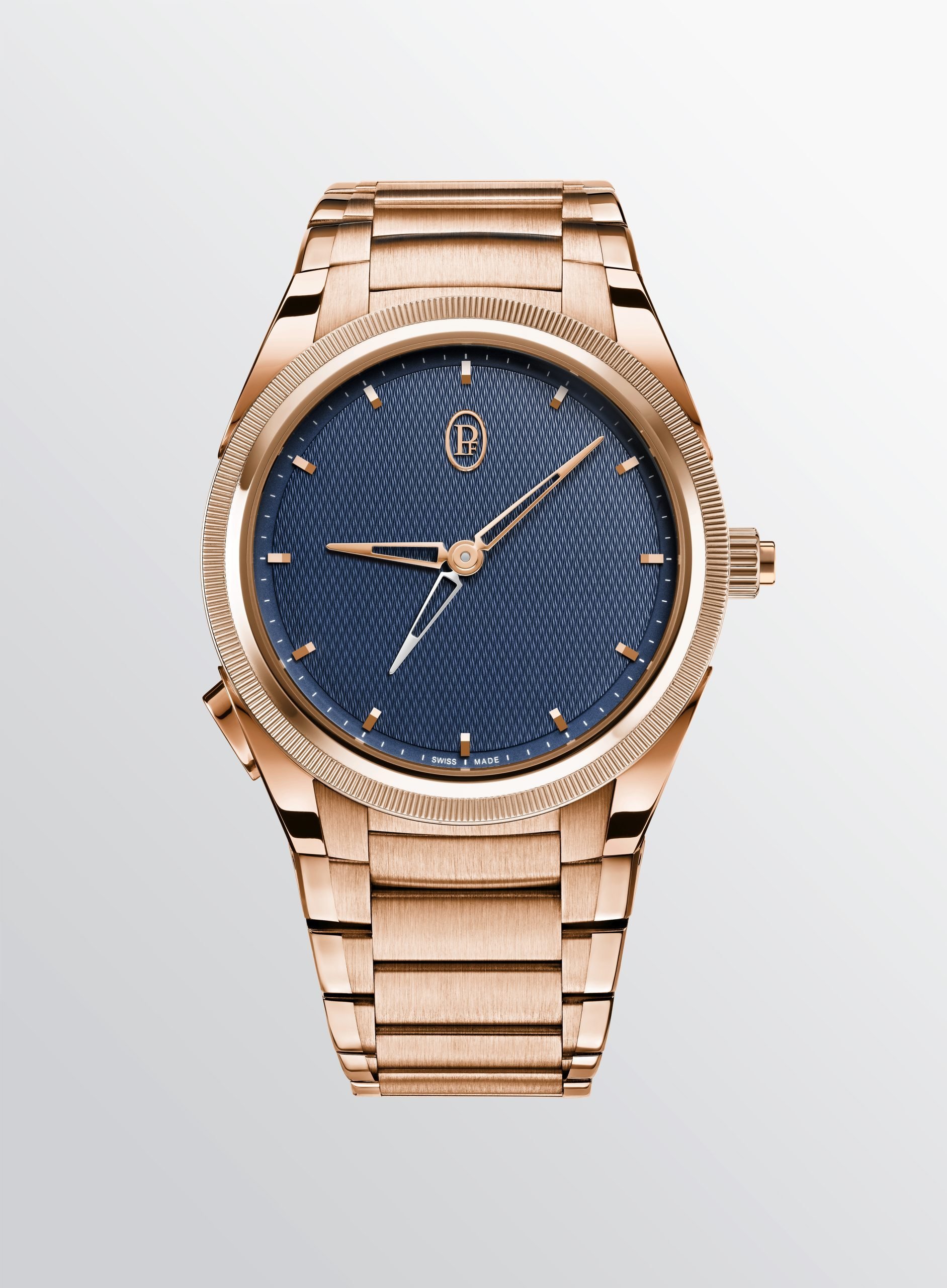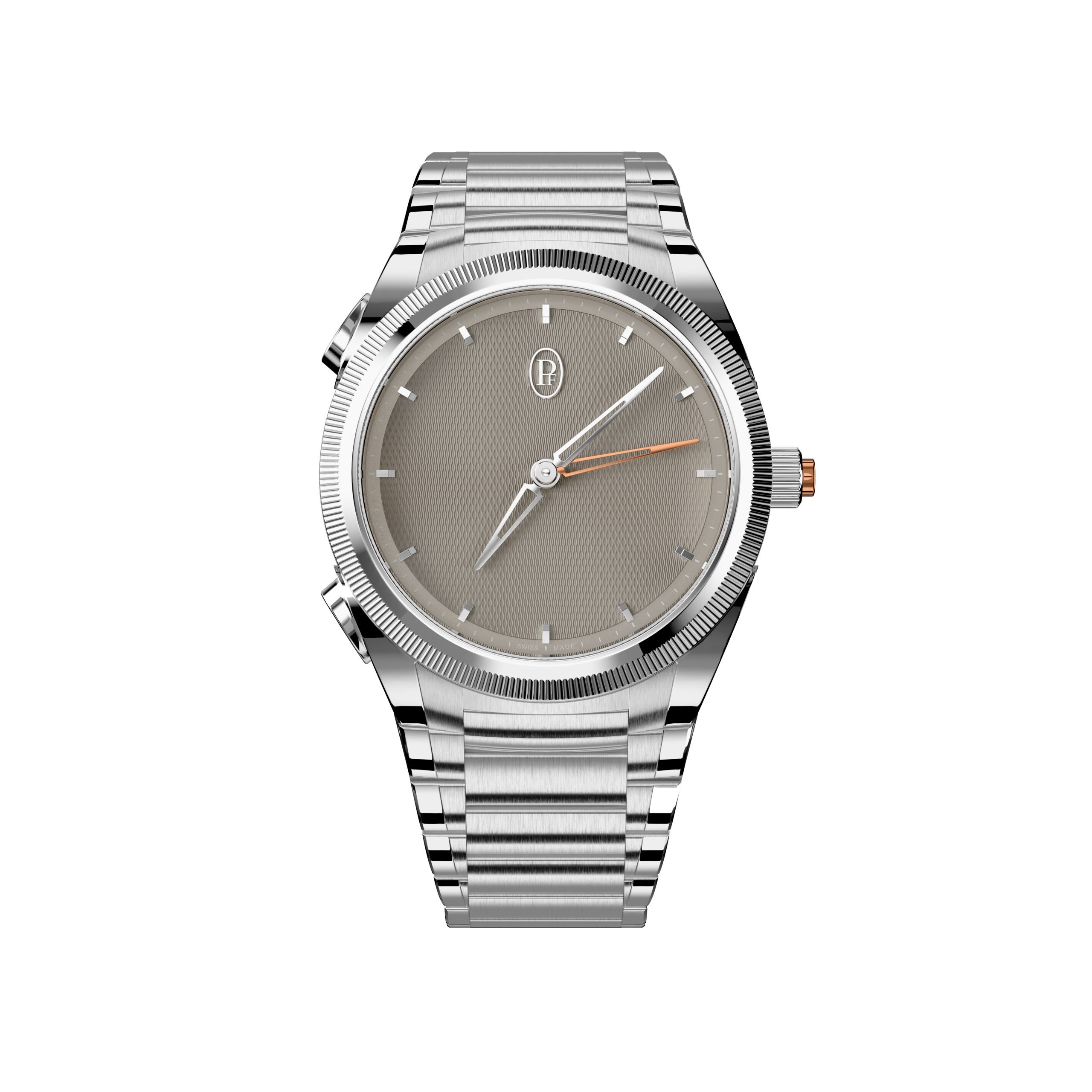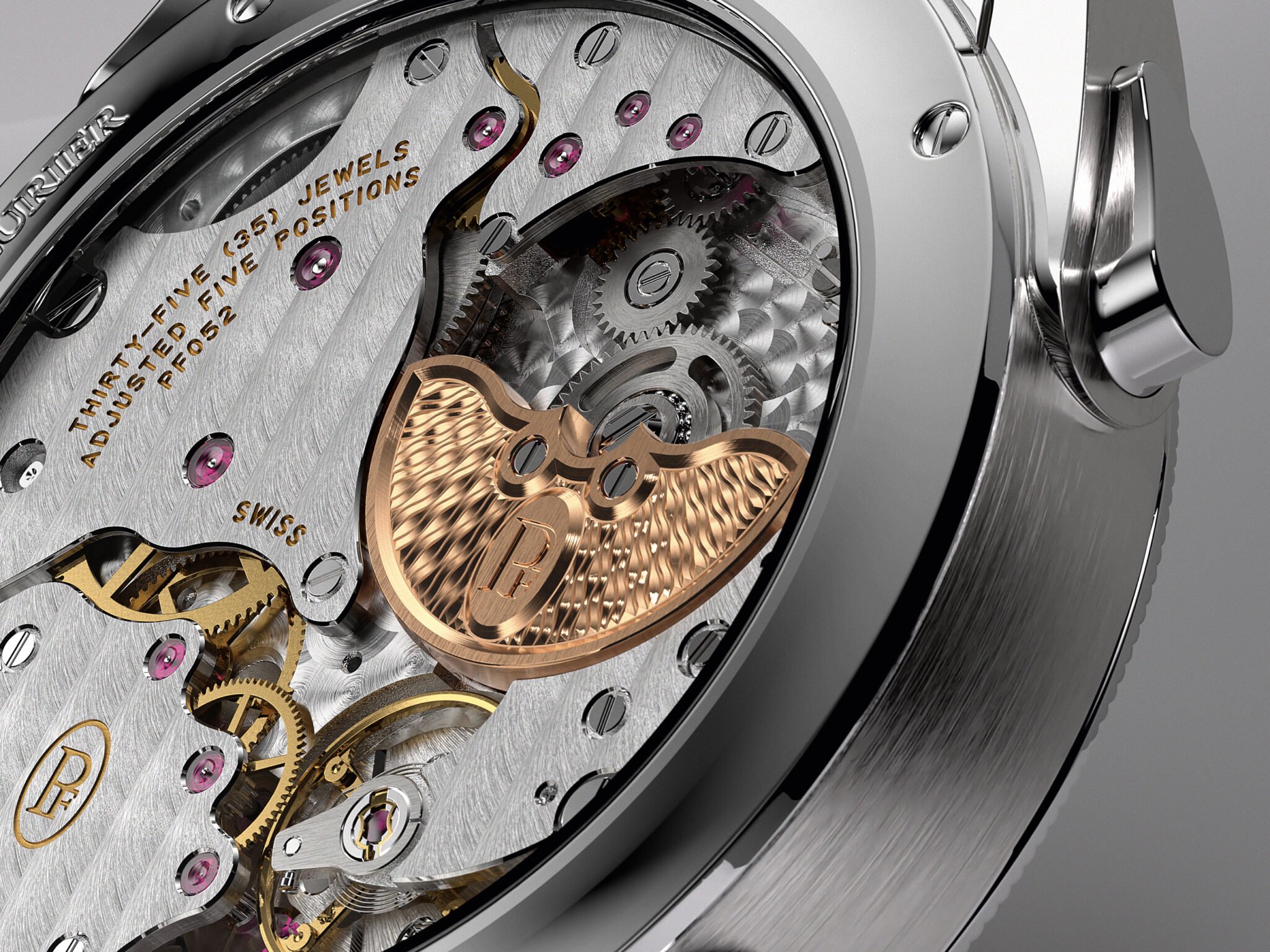A growing demand for smaller or midsize timepieces is quite possibly the biggest trend we’ve seen within the watch industry in 2023 thus far. In one sense, the pendulum was bound to swing the other way at some point, and the popularity of bold, chunky, 43mm+ watches was destined to fade. However, the draw to smaller and midsize watches goes beyond a simple flux in style preferences. It’s indicative of two other key shifts in the industry. First, there’s a greater emphasis on diversity and serving a variety of wrist sizes, including women, who generally have smaller proportions. In addition, vintage watches, which tend to be smaller or midsized, are also in high demand. Therefore it comes as no surprise that brands have started to create their modern designs with a more modest, retro-inspired look and feel.
Another resurging trend is the desire for more complicated watches. Complications, such as tourbillons and minute repeaters were a major flex in the industry about fifteen years ago, and now a new generation of collectors is discovering the intrigue of something more than your standard time-only watch. This shift also ties back to the increasing numbers of female buyers. They are demanding more from their timepieces and insisting the industry change its approach to women’s watch designs, which has long placed an emphasis on form over function.

The Challenge of Creating Complicated Watches with Accessible Sizing
One of the biggest challenges a watchmaker can face is bringing these two trends together: creating something highly complex and highly wearable. Executing any given complication—as simple as a chronograph or as complex as a minute repeater—necessitates additional components and therefore increases the diameter or depth of the movement and in turn the case that must house it. Incorporate more than one complication, and it’s quite challenging to keep the watch accessible and aesthetically pleasing on the wrist.

When it comes to complicated watches, Parmigiani Fleurier is one of the leaders in the industry. Within the past year alone, the brand has debuted two world-first complications—beginning with the Tonda PF GMT Rattrapante in April of 2022 and followed by the Tonda PF Minute Rattrapante this past March. Both models house the Tonda PF collection’s signature micro-rotor movement as the base on which the complications are built.

To make an automatic watch, you must have an oscillating weight that rotates with the motion of the wrist and thereby transmits energy to wind the watch. A micro-rotor is the most compact way to achieve this because the oscillating weight is reduced in size and integrated directly into the movement. By using a micro-rotor movement as the base, Parmigiani was able to execute both complications in mere 40mm cases, with just 10.7mm thickness. While not technically midsized, 40mm is still a very versatile proportion that will suit most wrists.

“Going small and going complicated requires a delicate balance, because you cannot reduce the thickness of a complication,” says Guido Terreni, CEO of Parmigiani Fleurier. “To be thin and to be small in diameter with complexity in the construction is not easy at all. So, the reason that we use the micro-rotor as a base caliber for the Tonda PF Minute Rattrapante and the Tonda PF GMT Rattrapante is to keep them quite slim on the wrist.”
Parmigiani Fleurier’s World-First Complications
To fully appreciate what Parmigiani has achieved with the Tonda PF Minute Rattrapante and the Tonda PF GMT Rattrapante, it’s important to understand the complications in their base forms. Rattrapante comes from the French verb rattraper, which means to “catch up.” The rattrapante has traditionally been paired with a chronograph function since its application in pocket watches in the 1800s and in its first application in a wristwatch by Patek Philippe in 1923.
A rattrapante chronograph, also known as a split seconds chronograph, allows you to time two intervals instead of one, as with a standard chrono. Here, the rattrapante hand sits directly above or below the chronograph seconds hand. When the chronograph pusher or button is engaged, both the rattrapante and seconds hand begin tracking elapsed time in unison. Engaging the rattrapante pusher stops the rattrapante hand, measuring the first interval. If you press the rattrapante pusher a second time, the rattrapante hand will fly around the dial and “catch up” to the chronograph seconds hand as it continues to time the second interval. Parmigiani builds on this concept by applying it to both a classic GMT or dual-time zone complication and a countdown timer, which is typically achieved with a unidirectional, 60-minute dive bezel.
For the Tonda PF GMT Rattrapante, the two hour hands—one for each time zone—are situated one above the other, with home time below (rendered in 18-karat rose gold) and the second time zone above (rendered in 18-karat white gold). For everyday wear, the Tonda PF GMT Rattrapante appears to be a time-only watch with an additional pusher or button on the case at seven o’clock. When that pusher is engaged, the 18-karat white gold hour hand advances forward in one-hour increments to indicate the second time zone while the 18-karat rose gold hour hand stays fixed on home time. When you’re ready to return home, simply press the button on the crown at three o’clock, and the 18-karat white gold hour hand will “catch up” to the 18-karat rose gold hour hand. Once returned to this position where the two hour hands are overlaid, the timepiece appears to be a simple time-only watch.
“In watchmaking there is a permanent tension between aesthetic and technique, as if there are two separate worlds that must coexist,” adds Terreni. “This is even reflected in the word used to describe the components conveying the design of a timepiece, the watch exterior elements collectively referred to in French as ‘habillage,’ meaning ‘that which attires the movement.’ To me, the way you develop a complication has incredible implications on the mood of the watch and hence on its design.”
Alternatively, the Tonda PF Minute Rattrapante showcases an even more unique twist on the traditional rattrapante by offering a countdown timer. Here, we have a somewhat similar setup as the GMT except this time, the Minute Rattrapante has two overlapping minute hands instead of hour hands, as well as two additional pushers. The pusher at eight o’clock advances the 18-karat rose gold minute rattrapante hand in five-minute increments, and the pusher at ten o’clock advances it in one-minute increments, allowing you to set the period of time you want to measure. Once the 18-karat gold, rhodium-plated seconds hand reaches the 18-karat rose gold minute rattrapante hand, you know your time has elapsed. Deploy the pusher on the crown in order for the seconds hand to “catch up” with the other and return to the same “time-only” appearance.
Quiet Luxury: Where Form and Function Intersect
Building on the trends around form and function that we’ve discussed is the growing affinity toward “quiet luxury.” This concept—a mode that favors high quality and a minimalist and timeless aesthetic—has been at the core of Parmigiani Fleurier’s design approach long before HBO‘s Succession made it a popular buzzword. And both the Tonda PF Minute Rattrapante and the Tonda PF GMT Rattrapante perfectly exemplify it.
These two world-first complications are surprisingly understated and unassuming. At first glance, the Tonda PF Minute Rattrapante and Tonda PF GMT Rattrapante appear to be straightforward, time-only watches. Instead, they require you to look closer, notice the subtly integrated pushers on the side of the case, and become curious about how they might work. This aesthetic, combined with the technical achievement of developing two entirely new complications within highly wearable proportions, makes Parmigiani Fleurier a pioneer in complicated watches and a pillar of quiet luxury.
“I always want to continue to surprise,” shares Terreni. “I hate when someone tells you it’s impossible to do—this is something you cannot accept. You can tell me it’s never been done, that’s interesting, or you’ve tried and didn’t make it, but impossible? You haven’t tried enough.”
Many complicated watches appear just that—complicated. They can be busy, overcrowded, or intimidating. In certain instances, it comes with the territory—perhaps additional registers or a chapter ring are required for the functionality of the complication. However, complexity and restraint can coexist: Just because a watch can perform a complex function doesn’t mean it has to appear complex.













